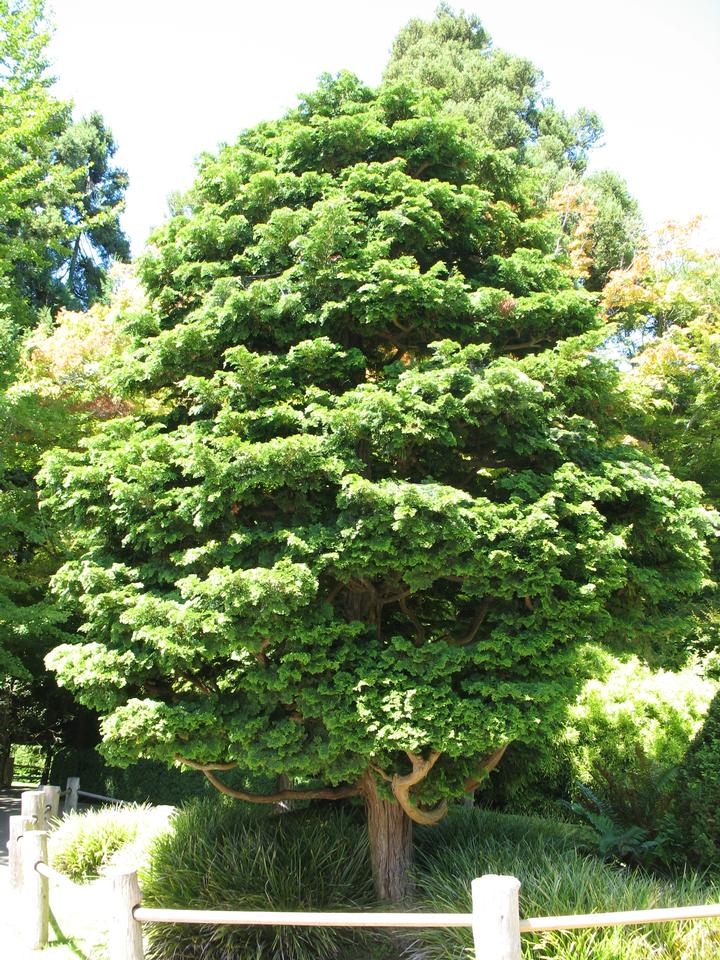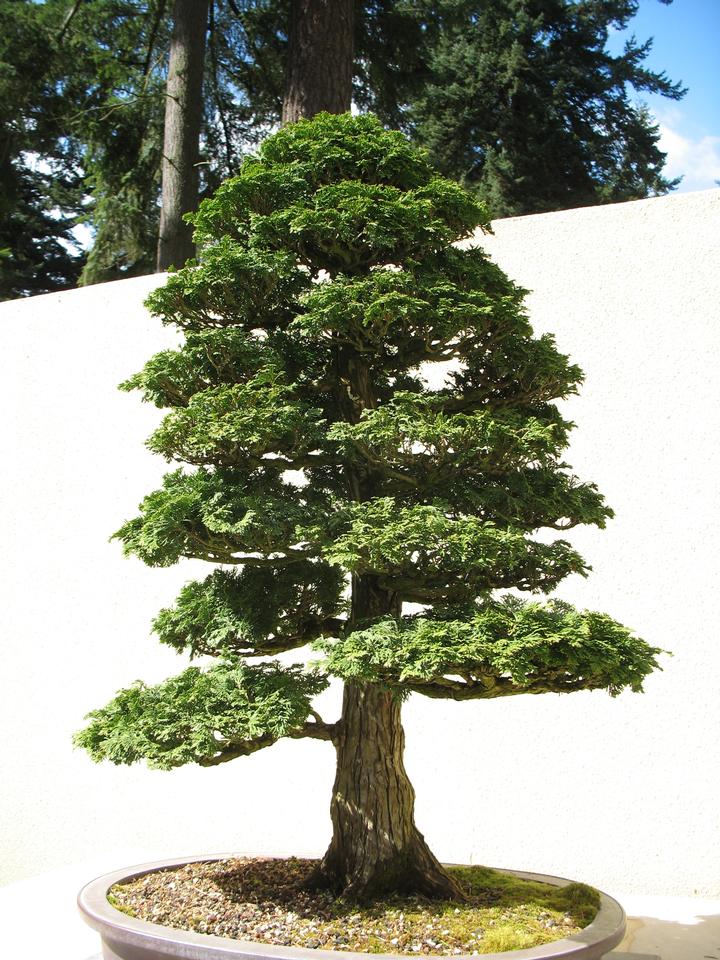Falsecypress, Hinoki or Hinoki Cypress
Chamaecyparis obtusa
Cupressaceae - Cypress
Description
Leaves: Small; scale-like; very similar to Cupressus and Thuja; attached in alternating pairs flattened along and clasping twig; 1/12" long or less; dark green above with white markings underneath; evergreen; persist 2 to 3 years; aromatic when crushed.
Twigs/buds: Twigs slender; covered by foliage; arranged in flattened, somewhat drooping sprays. Buds very small; indistinct; not useful for identification purposes.
Flowers/fruit: Monoecious. Fruit a leathery cone; 1/3" to 1/2" diameter; round; orange-brown; 8 to 10 shield- shaped scales with a bump on each one; matures in one year.
Bark: Fibrous; red-brown; coming off in long, narrow strips; distinctive.
Wood: Unimportant.
General: Native to Japan and Formosa. Not a true cypress. Small to medium-sized tree, depending on cultivar; medium to slow growth. Intermediate shade tolerance.
Landscape Use: This is a nice small evergreen that is little planted in Utah. It is easily confused with some of the arborvitaes with its scaly foliage in flattened sprays. I have seen this doing well at the UofU. The foliage and canopy texture are very attractive and several forms are available. Zones 4-8.
Cultivars: 'Alaska', 'Aurea', 'Aurea Nana', 'Aurora', 'Autumn Glory', 'Crippsii', 'Filicoides', 'Kosteri', 'Nana Gracilis'.
Characteristics
General
| Family | Cupressaceae - Cypress |
|---|---|
| Cultivar Availability | Yes |
| Hardiness Zone | 4-8 |
| Type | Conifer |
| Utah Native | No |
Growth
| Growth Rate | Low |
|---|---|
| Mature Height | Medium |
| Longevity | High |
| Is Good Under Power Lines | No |
| Crown Shapes | Pyramidal |
Ornamental
| Bark | Yes |
|---|---|
| Fall Color | No |
| Flowers | No |
| Foliage | Yes |
| Fruit | No |
Tolerance
| Shade | Medium |
|---|---|
| Salt | Medium |
| Drought | Medium |
| Poor Drainage | Low |
| Alkalinity | Medium |
| Transplanting | Medium |










